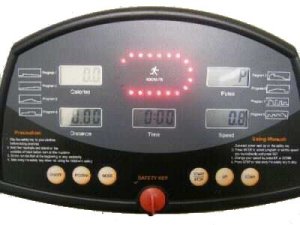
While doing some research about what to write this blog post on, we stumbled upon a blog post from 2004 in which the author, with the purpose of saving people from health scams, wrote about the myth of subluxation. The author also grossly generalized chiropractors, representing them in such a way where they all have the same beliefs and uphold the same techniques and philosophies.
Of course, one must always peruse the internet at one’s peril, but we were a bit disheartened to see this, even if it was back in 2004. We can only hope that this blogger has changed their mind or perhaps has done more research on the matter.
The main course the article seems to take is discrediting the basis of chiropractic care along with it’s founder, DD Palmer, and most specifically the idea of subluxations, which the author declares, are simply myths.
So what are subluxations? The word itself was poorly chosen by DD Palmer to describe what he actually meant and what chiropractors today help with. Palmer, who was a bit eccentric, used this word seemingly as a way to make chiropractic care stand apart from other philosophies. Just like ballet has a million different terms for movements, the field of chiropractic study also has a different lingo from other medical fields. However, this does not mean chiropractic is somehow inferior for aforementioned lingo. To continue the metaphor above, ballet lingo may differ from the terms used in tap dance – still both are forms of dance. Likewise, the chiropractic field lingo differs somewhat from terms a physician uses; yet both are still fields of medicine. Now that we have established the wording may have been a bit off, what DD Palmer was referring to and what chiropractors today look for are misalignments of the spine or of any joint. It’s not necessarily about the spine itself, but more so what that misalignment is doing to your nervous system.
If your spine is unaligned, the unaligned area can hamper the flow of your nervous system, disrupting what your body normally naturally does on its own. This also can put more strain on the muscles surrounding the misaligned area, which often causes pain and tenderness.
By correcting the misalignment, a chiropractor is essentially getting rid of a road block for your central nervous system, allowing it to move at full speed; allowing it to do all it needs to do.
There have been many studies about the effectiveness of chiropractic care. It had been scrutinized, prodded, and very slowly accepted. And while sublaxations may have been a poorly chosen word to describe what it is we look for, they are in no way a myth.
The author cites the idea of the innate as being utterly ridiculous. DD Palmer chose this word to describe the body’s “spirit” – his actual wording is a little.. eccentric, yet again, but the body clearly has an innate ability to heal itself. This is seen in the simplest of injuries and not a ridiculous conclusion. You scrape your knee and a week later, the scrape is gone. This is the innate spirit that Palmer was referring to and what chiropractors today try to help run smoothly. Again, it all stems back to the nervous system.
There are many different ways and techniques to go about correcting the misalignments of the spine. Each chiropractor is likely to vary, depending on who they are adjusting, what area they are adjusting, and what accredited chiropractic institution they graduated from. Chiropractors having varying views on the best techniques. The author also alleged that all chiropractors are anti-immunization. This also is untrue. Some are, some aren’t; each have their reasons for believing whatever it is that they do (those reasons are also most likely quite varied.)
As stated before, we really hope the author of that post has looked in to chiropractic care a bit more, as opposed to basing an opinion about the entire world of chiropractic care on one instance.
Myth: BUSTED
Thanks for reading!











 Bindl Chiropractic Facebook Page
Bindl Chiropractic Facebook Page Bindl Chiropractic Instagram
Bindl Chiropractic Instagram Bindl Chiropractic Website
Bindl Chiropractic Website Dr. Bindl's LinkedIn
Dr. Bindl's LinkedIn Dr. Bindl's Twitter
Dr. Bindl's Twitter